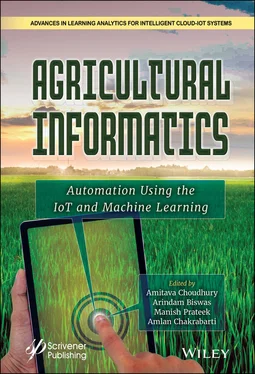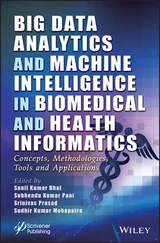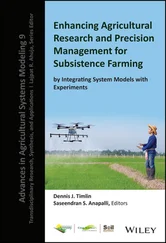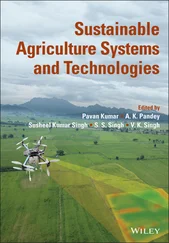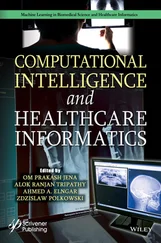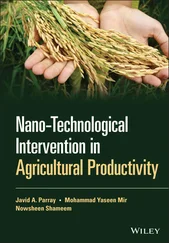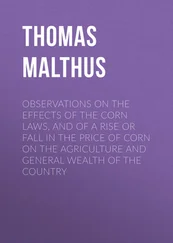14. Veenadhari, S., Bharat Mishra, D., Singh, D.C., Soybean Productivity Modelling using Decision Tree Algorithms. Int. J. Comput. Appl ., 27, 7, 11–15, 2011.
15. Veenadhari, S., Misra, B., Singh, C.D., Machine learning approach for forecasting crop yield based on climatic parameters, 2014 International Conference on Computer Communication and Informatics , Coimbatore, pp. 1–5, 2014.
16. Bitouk, D., Verma, R., Nenkova, A., Class-level spectral features for emotion recognition. Speech Commun ., 52, 7–8, 613–625, 2010.
17. Tan, L., Cloud-based Decision Support and Automation for Precision Agriculture in Orchards. IFAC-PapersOnLine , 49, 330–335, 2016.
18. Horie, T., Yajima, M., Nakagawa, H., Yield forecasting. Agric. Syst ., 40, 1–3, 211–236, 1992.
19. Basso, B., Cammarano, D., Carfagna, E., Review of Crop Yield Forecasting Methods and Early Warning Systems. First Meet. Sci. Advis. Comm. Glob. Strateg. to Improv. Agric. Rural Stat , 2013.
20. De La Rosa, D., Cardona, F., Almorza, J., Crop yield predictions based on properties of soils in Sevilla, Spain. Geoderma , 25, 3–4, 267–274, May, 1981.
21. Kaspar, T.C. et al ., Relationship between six years of corn yields and terrain attributes. Precis. Agric ., 4, 87–101, 2003.
22. Shibayama, M. and Akiyama, T., Estimating grain yield of maturing rice canopies using high spectral resolution reflectance measurements. Remote Sens. Environ ., 36, 1, 45–53, 1991.
23. Wilcox, A., Perry, N.H., Boatman, N.D., Chaney, K., Factors affecting the yield of winter cereals in crop margins. J. Agric. Sci ., 135, 4, 335–346, 2000.
24. Lee, H., Bogner, C., Lee, S., Koellner, T., Crop selection under price and yield fluctuation: Analysis of agro-economic time series from South Korea. Agric. Syst ., 148, 1–11, 2016.
25. Selvaraju, R., Meinke, H., Hansen, J., Approaches allowing smallholder farmers in India to benefit from seasonal climate forecasting. Crop Sci ., 2004.
26. Groenendyk, D., Thorp, K., Ferré, T., Crow, W., Hunsaker, D., A k-means clustering approach to assess wheat yield prediction uncertainty with a HYDRUS-1D coupled crop model, 7th International Congress on Environmental Modelling and Software, iEMSs 2014 – San Diego, United States Duration: Jun 15, 2014 to Jun 19, 2014.
27. Teixeira de Lima, G.R. and Stephany, S., A new classification approach for detecting severe weather patterns. Comput. Geosci ., 52, 34, 2013.
28. Challinor, A.J., Slingo, J.M., Wheeler, T.R., Craufurd, P.Q., Grimes, D.I.F., Toward a combined seasonal weather and crop productivity forecasting system: Determination of the working spatial scale. J. Appl. Meteorol ., 175–192, 2003.
29. Singh, C.V., Pattern characteristics of Indian monsoon rainfall using principal component analysis (PCA). Atmos. Res ., 79, 3–4, 317–326, 2006.
30. Canale, A. and Ruggiero, M., Bayesian nonparametric forecasting of monotonic functional time series. Electron. J. Stat ., 10, 2, 3265–3286, 2016.
31. Hong-ying, L., Yan-lin, H., Yong-juan, Z., Hui-ming, Z., Crop Yield Forecasted Model Based on Time Series Techniques. J. Northeast Agric. Univ. (Engl. Ed.) , 6, 4, 298–304, 2012.
32. Matis, J.H., Birkett, T., Boudreaux, D., An application of the Markov chain approach to forecasting cotton yields from surveys. Agric. Syst ., 1989.
33. Jain, R. and Ramasubramanian, V., Forecasting of crop yields using second order Markov Chains. J. Indian Soc. Agric. Stat ., 52, 2, 61–72, 1998.
* Corresponding author : a.choudhury2013@gmail.com
2
Smart Farming Using Machine Learning and IoT
Alo Sen1, Rahul Roy1* and Satya Ranjan Dash2
1ei2 Classes and Technologies, Durgapur, India2School of Computer Application, KIIT University, Bhubaneswar, India
Abstract
From the early civilization till the date, three things: Shelter, Garment and Food are main mantra of a human being. People are quite advanced with modern houses and dresses. But with increased population of Earth, As per UN Food and Agriculture Organization, people will have to produce 70% more food in 2050 rather than it did in 2006. In recent years IoT had been used to meet the challenge of different industrial and technical purposes. Now it is the time to meet the demand of future farming which can only be accomplished by smart Agro-IoT tool. There is a need to boost the productivity and minimize the pitfalls of traditional farming which is the main backbone of World’s Economical growth. IoT will help in continuous monitoring of the field to give useful information to the farmers which will add a new era in future farming. IoT tool can be implemented for monitoring climate change, water management, land monitoring, increasing productivity, monitoring crops, controlling insecticides and pesticides, soil management, detecting plant diseases, increasing the rate of crop sale etc. In this book chapter we will focus on some case studies like monitoring of climate conditions, greenhouse automation, crop management, cattle monitoring and management for smart farming with IoT device which will provide a clear idea why to use the technique in agriculture rather than some pre existing agricultural tool developed earlier.
Keywords: Smart farming, agro-IoT, agricultural tool, efficiency, productivity, IoT
The word “smart” means intelligent, clever, wise, etc. Now, when the word sits as a prefix with farming and built the word “smart farming”, obviously it is different from the traditional farming. In the past years, farmers had to monitor all the necessary things in field themselves or by hiring other labor for the same. Firstly, it requires manual checking of all the things associated with farming as well as it is time consuming. Secondly, it acquires a huge loss due to damage of growing crops in the field if continuous monitoring is not done. Thus traditional farming is not a good option due to major pitfalls. It also cannot fulfill the upcoming demand of food for upcoming years. Thus here is the need of smart farming system which will overcome all the shortcomings by taking the decision on their own in complex situations. Different sensors are embedded in the autonomous system to collect the data instant and support on time decision making process.
In this section, researchers have shown the different applications of Agro-IoT through Figure 2.1. Figure 2.2illustrates the flow chart of step by step process of Agro-IoT farming.
2.1.2 Technology Involvement in Smart Agriculture
Table 2.1illustrates the technology which are used in smart agriculture.
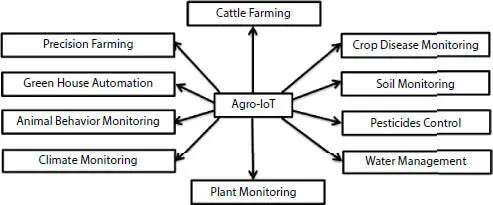
Figure 2.1 Applications of agro-IoT.
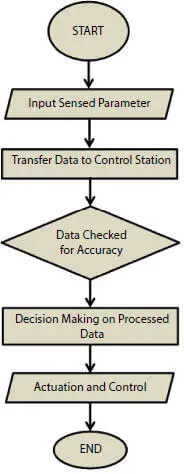
Figure 2.2 Flow chart of step by step process of agro-IoT farming.
Researchers have identified the following major problems like climate, crop, soil monitoring, water management, pest, weed management which are discussed in the following section and researchers have found out efficient solutions for the same.
Читать дальше
